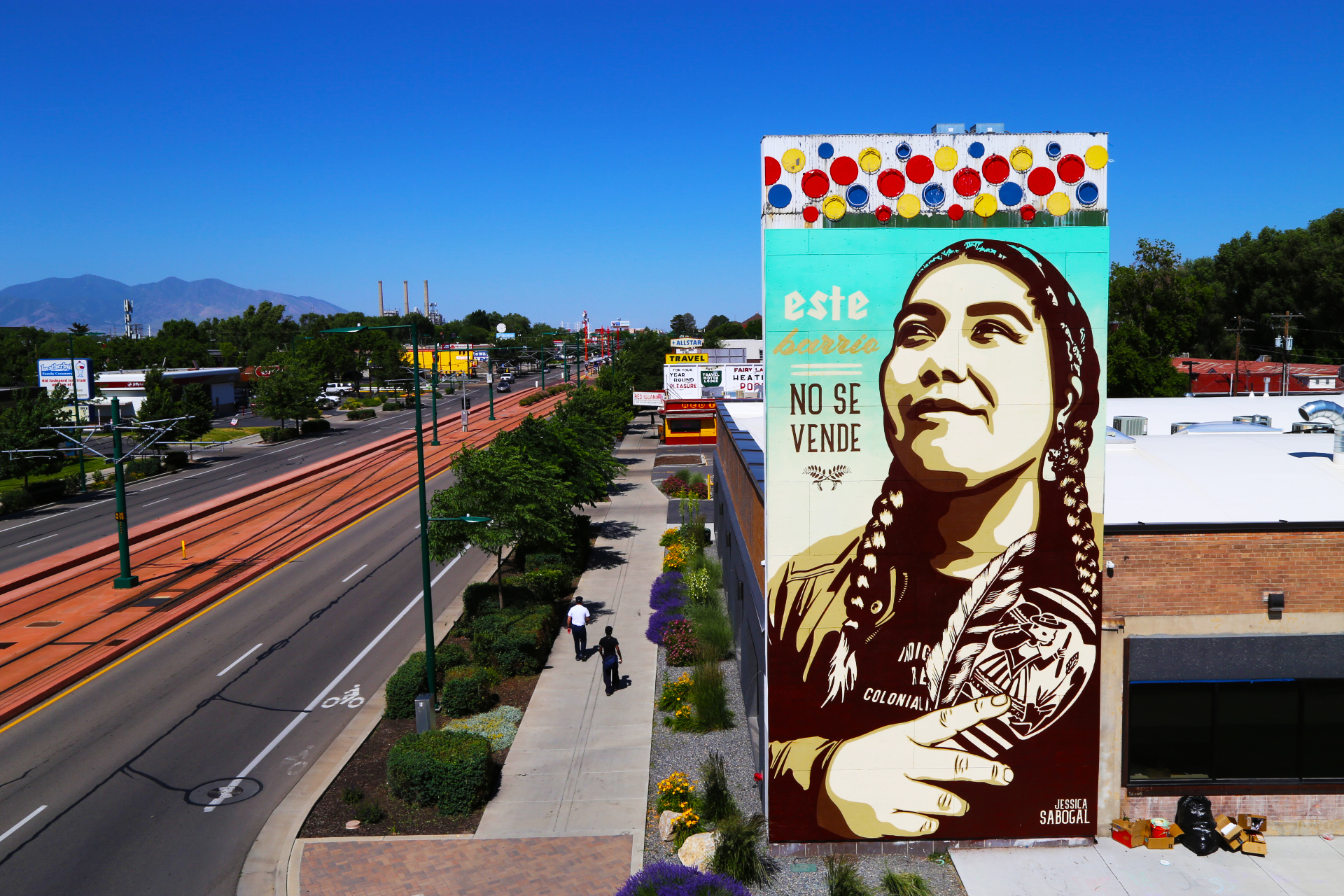
In the 2018 anniversary issue of Community Voices, we shared how residents and their partners have worked for a decade and a half to improve lives and strengthen community in Salt Lake City’s west side neighborhoods. The mural pictured above speaks to the very real concern that residents may not be able to enjoy the benefits of their own efforts. The cost of renting or owning property in Salt Lake City’s west side neighborhoods has skyrocketed in recent years, far outpacing wage growth. These neighborhoods are facing an affordable housing shortage, a rising eviction rate, and the construction of upscale housing complexes that are out of reach for most residents. Many have been forced to leave. Those who stay face increasing cost burdens; the number of west side families who spend 30% or more of monthly income on housing grew by over 14% between 2000 and 2015, compared to under 6% in SLC as a whole.
Sabogal’s mural, pictured above, speaks to the lived experience of these gentrifying forces. More than a beautiful mural, it is also a challenge to the systems that can displace residents and families under the guise of growth. It is a manifestation of the heart and artistry of real people who already live in these neighborhoods, who use their energy to make their homes, their streets, and their
schools stronger and more beautiful places for one another. Looking East towards a city attempting to grow, it is a reminder that places like Rose Park and Glendale
have deep roots that belong to their people, and that they are not for sale.
Este Barrio No Se Vende (This Neighborhood is Not for Sale), mural and featured photograph by Jessica Sabogal. Este Barrio No Se Vende was produced as part of a partnership with Mary W. Jackson Elementary School, the Office of Equity and Diversity and the Women’s Resource Center at the University of Utah, the Utah Museum of Fine Arts, and UNP. It features a stunning portrait of local artist Ella Mendoza, co-founder of the Nopalera Artists Collective, based on a photo by Flor Olivo.
Jessica Sabogal is a first generation Colombian American muralist. Her pieces possess a vision of female identity that is revolutionary and powerful, brave and beautiful. By utilizing a spray can, she aims to color her canvas by unraveling stories she once heard, lived, struggled, and loved. Throughout the years, Sabogal has consistently reinvented what it means to be a female muralist in a male-dominated medium. She has continuously pushed the boundaries as an artist by utilizing her medium for social change, action, and empowerment.
